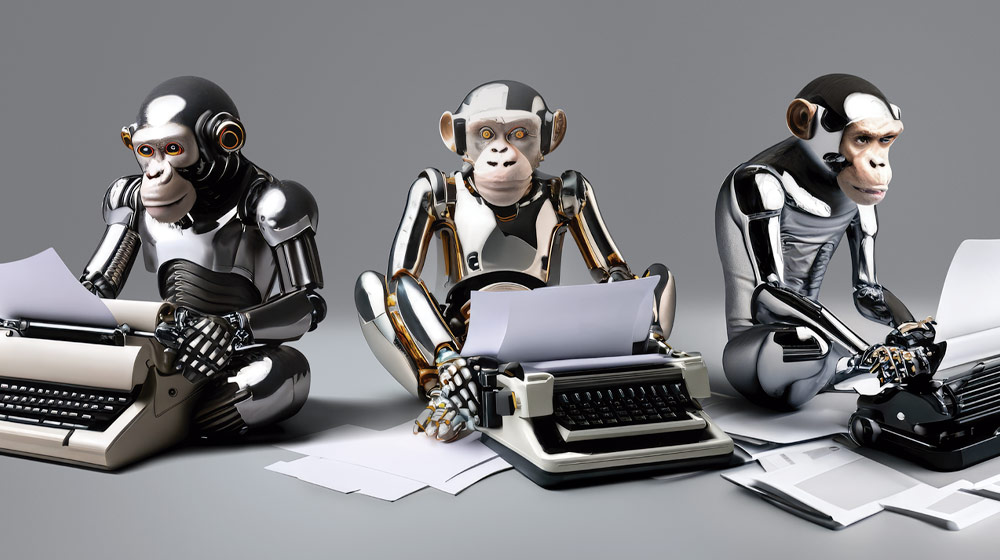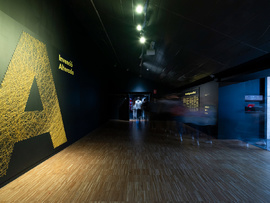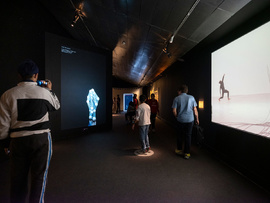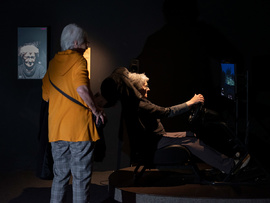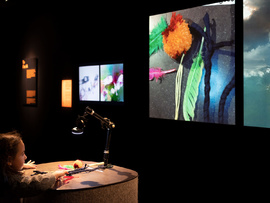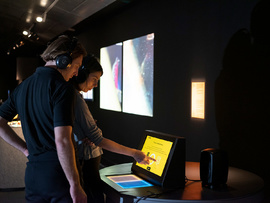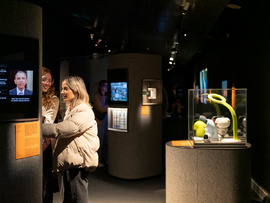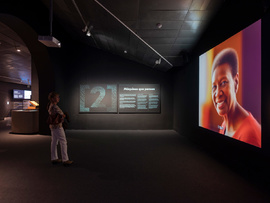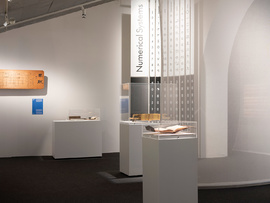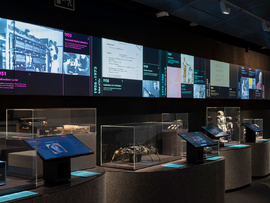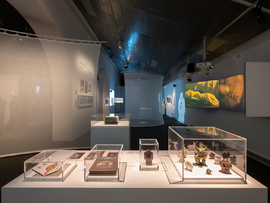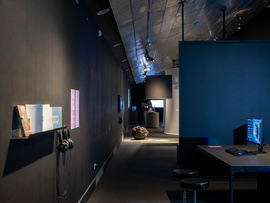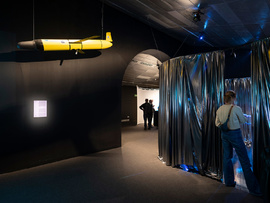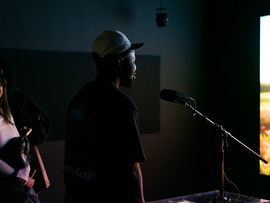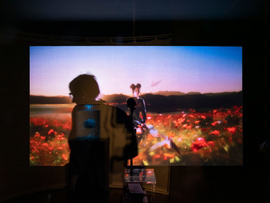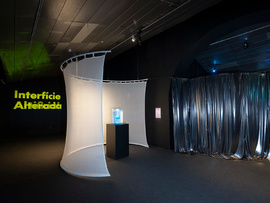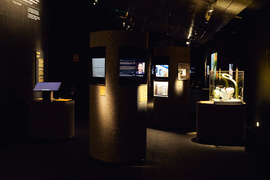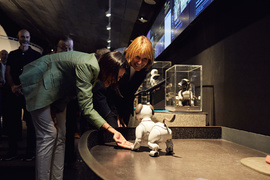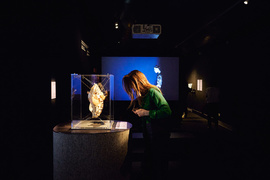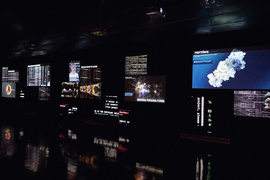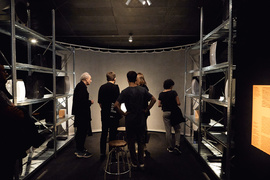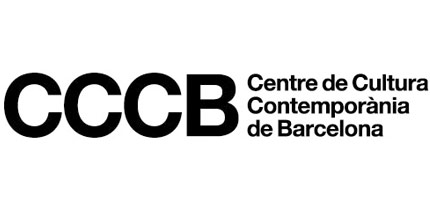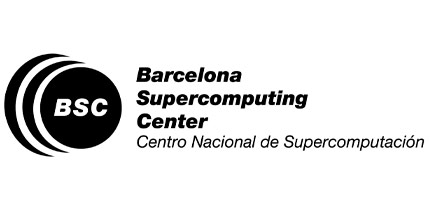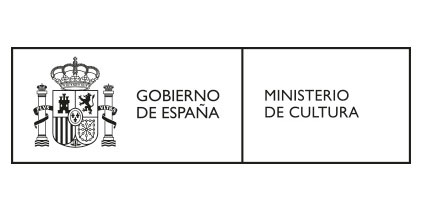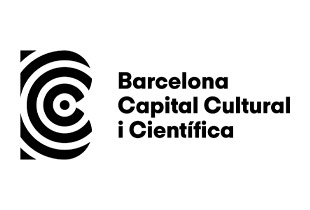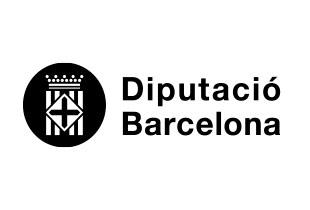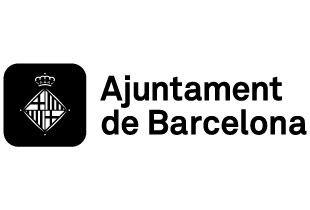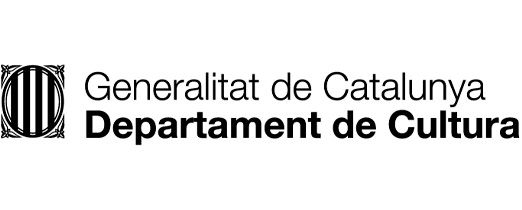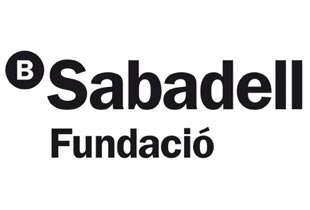Exhibition
AI: Artificial Intelligence
An exhibition about the history, functioning, creative possibilities, and ethical and legislative challenges of artificial intelligence today. Experiment with AI, find out about its risks, discover scientific and artistic innovations, and explore a decisive technology for the future of humankind.
Never before has a technology grown so fast and made its way so directly into our lives. Artificial intelligence is both worrying and fascinating. It is a threat and it generates opportunities. It has detractors and defenders. In this context of public conversation and collective dependence of AI—can we make decisions without its assistance?—the exhibition suggests that we stop, try to understand artificial intelligence and start a debate about its development in the coming years.
The exhibition looks at the role of artificial intelligence in everyday life, the opportunities it presents for scientific and biomedical research, the role of supercomputing as a major driving force, the present legislative situation, the risks of misinformation posed by its widespread use, and the racial and gender biases it can generate.
With a layout that includes interactive artistic installations, a timeline with milestones, key works created using AI, the testimony of experts and newly created pieces, the exhibition explores the relationship between artificial intelligence and human creativity. Taking part is a whole network of pioneering and upcoming artists such as Universal Everything, Robert del Naja (Massive Attack), Anna Ridler, Memo Akten, Mario Klingemann, Jake Elwes, Justine Emard, Steve Goodman (Kode 9), Espronceda, Eduard Escoffet and Maria Arnal, as well as research and innovation centres such as the BSC-NCS, Axolot.cat, the Music Technology Group at the UPF, the IIIA-CSIC, the CVC and the MIT.
The visit allows us to experiment with AI in person by means of 25 interactive installations: smell the flowers of a tree that went extinct last century or put a voice to a musical composition created using AI.
In addition, a selection of films related to the exhibition can be viewed on the Artificial Intelligence channel on Filmin (available to 17 March 2024).
Artificial Intelligence is coproduced by the CCCB and the Barcelona Supercomputing Center–Centro Nacional de Supercomputación (BSC-CNS), based on the original touring exhibition curated and organized by the Barbican Centre in London (2019). The exhibition at the CCCB coincides with the arrival at the BSC of one of Europe’s most powerful supercomputers, the MareNostrum 5, a computer that expands and speeds up the ability to conduct research using artificial intelligence.
Scientific advisor:Jordi Torres
Curators of the original exhibition at the Barbican Centre in London: Suzanne Livingston, Maholo Uchida, Luke Kemp. With the support of Marie-Charlotte Carrier and Anna Holsgrove
Curators: Lluís Nacenta
Participants of the exhibition
From the Barbican Centre original exhibition
Christina Agapakis, Memo Akten, Sofian Audry, Marija Avramovic, Case Western Reserve University, Ana Cuna, Alexandra Daisy Ginsberg, Es Devlin, J. Donald Tillman, Justine Emard, Steve Goodman (Kode 9), Ross Goodwin, Mark Gorton, Mick Grierson, Benjamin Grosser, Stefan Hurtig, Takashi Ikegami, Interactive Commons, Mario Klingemann, Lauren McCarthy, Alexander Mordvintsev, Robert del Naja, Nexus Studios, Tobias Nolte, Yoichi Ochiai, People + AI Research (PAIR), Anna Ridler, Chris Salter, Luis Sánchez, Alexandre Saunier, Sears think[box], Sony Computer Science Laboratories, Thomas Spier, Nao Tokui, Sissel Tolaas, Sam Twidale, Universal Everything, Detlef Weitz and Andrew Witt
New participants at the CCCB exhibition
Maria Arnal, Tina Bagué, Jordi Balló, JP Bonino, Francesca Bria, Jorge Carrión, Adam Cole, Dario Cortés, Cristian Cozar, Fernando Cucchietti, Anna Dumitriu, Amanda Duarte, Eduard Escoffet, Nicholas Evans, Jake Elwes, Dario García, Fran Gas, GPT-2 i GPT-3, Victor Guallar, Behzad Haki, Mohsen Hazrati, Joan Jené, Oriol Jorba, Sergi Jordà, Esen Ka, Jeppe Lange, Lissette Lemus, Solimán López, Maria Cristina Marinescu, Alejandro Martín, Roberto Massó, Alex May, Gabriel McGee, Marta Melé, Maite Melero, Joaquim Moré, Toru Morimoto, Ivan Paz, Kris Pilcher Carmen Puche Moré, Jordi Sabater, Manel Sanromà, Eryk Salvaggio, Darius Shaoul, Taller Estampa, Alfonso Valencia, Marta Villegas and Weidi Zhang.
Sections of the exhibition
Data worlds
AI perceives the world as a data set. Big data would not have developed so spectacularly without AI. This is why it is extremely sensitive to the way data are gathered and analysed.
AI systems are numeral systems. Even those that answer with words, images and sounds do so by converting them previously into numbers, and they write, draw and speak based on number operations.
Digital media (mobile phones, sensors, personal computers, the internet, etc.) play an important role in gathering the data AI relies on. We all contribute to this in our daily lives, often without being aware of it. The criteria and biases in the way we humans use these systems, and those that implicitly underly the way digital media operate, are the origin of the criteria and biases shown by AI.
AI compiles information, discovers regularities and builds sets of images from immense data banks that cannot be analysed by the human brain. This understanding of AI can be a source of potential scientific discoveries and gives us a new perspective of the world.
Mind machines
Is AI really intelligent? We can say, in any case, that AI learns because it changes the way it works based on acquired experience, and it thinks because it processes information and acts accordingly.
From Babbage, Lovelace and Turing to the present day, humans have sought to create machines that mimic the brain. These machines have currently attained a very high level of self sufficiency. The invention of mind machines provides a surprising and fascinating glimpse of what thinking means and, more specifically, what perceiving, ordering and understanding signifies.
When humans and machines cooperate, and when they compete, the mindset of each one clearer. Detecting the convergence spaces and margins of incomprehension between human and machine thinking is fundamental in addressing the crisis of contemporaneity.
The dream of AI
The human ambition to create an intelligent, autonomous being artificially is not new. The current rise of AI taps into a desire that has been present since time immemorial and has manifested itself in different ways across various human civilisations: the curiosity about, fascination with and horror of creating, summoning or conjuring up artificial beings.
Some of the roots of AI can be found in Shintoism, Judaism, alchemy and Gothic literature, among others.
AI is a new technology, but our desires and fears remain, to a large extent, the same.
Endless transformation
Is AI truly artificial? Contemporary science and philosophy call into question the distinction between the natural and the artificial. Can we really talk about artificial life?
AI brings new perspectives to contemporary science and culture that lead to new scientific breakthroughs and require a new social and legal framework.
Art is a symptom, a test bed and a space that criticises and inspires social transformations. What is the current situation and what are the future prospects for the impact of AI on cinema, literature and music?
And what now?
Related contents
Lluís Nacenta and Jordi Torres talk about the cultural and scientific changes surrounding the AI
Inside the exhibition "AI: Artificial Intelligence"
Curator Lluís Nacenta, and scientific adviser to the exhibition “AI: Artificial Intelligence”, Jordi Torres, explain how artificial intelligence is created and developed and how it impacts our lives in science and in art. A conversation to introduce us to this omnipresent ...
RADAR #2 MANS O
The exhibition “AI: Artificial Intelligence” provided the opportunity to invite artists MANS O and Joan Sandoval to the CCCB to present their performance experimenting with algorithms, nuevo_algo_ritmo.ckpt. Through this project, they “raise the curtain” to reveal, via ...
